Meet Kathy Curran, director of The Healing WELL, at 476 Eddy Street. The Healing WELL is focused on inner peace and community. The message they share, shouting it from the rooftops, is that human connection is everything. They encourage you to pass it along. From simple acts of kindness, a lot of good can be done. During these challenging times, they’ve maintained connection with their program participants through regular phone calls and hand-written letters—along with posting inspirational pictures and quotes in their windows for all who pass by The Healing Well. They also continue to offer their hallmark wellness programming: free daily sessions like Meditation, Yoga, 12-Steps for Healing, and Poetry.
At the start of shelter-in-place, The Healing Well quickly adapted their schedule of in-house programming to online Zoom classes. They sent out resource packets and also set up a fresh produce program as the result of an assessment, which found food insecurity was a top concern for many in the neighborhood. Once restriction loosened, they also started classes outside at Boeddeker Park, as well as a walking group.
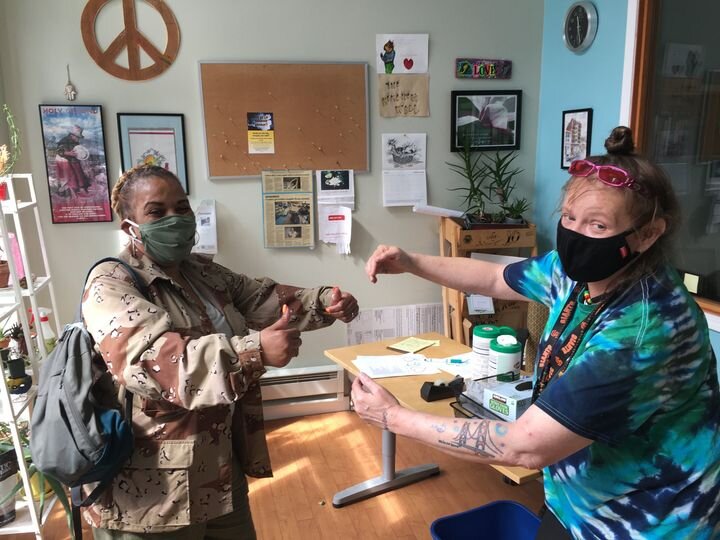
Carol and Kristi at The Healing Well
To support an overwhelming number of people who are socially isolated, the Healing WELL returned to old-school methods of communication (letters, phone buddy systems) to break past the all-too-common tech barriers.
“The phone buddying and the snail program have been great ways to connect with people, says Kathy. “People are saying, we don’t want to be alone. We want to reach out to others.”
“One woman we were talking to was sick, and she said, ‘if it weren’t for you guys, nobody would even know that I was sick. Nobody.’ She didn’t have anybody connecting with her. The Healing Well has always been a second home for people, so we were thinking, how can we stay connected—even while people were isolated in their rooms?”
“For a number of people, getting on a Zoom call for a yoga session or 12-step class…it’s just too much. They don’t have the capacity to do that for one reason or another. But most people have phones. Our volunteers started calling people once a week, a couple times a week. It was not about offering resources or doing an assessment, it was about a friendly call to remind people that they are still connected to others.”
“So [phone buddying] has really grown. What I have loved about it, is that it started out as staff intensive. But now that it’s been going on for months, those relationships have been pretty well cemented. Our volunteers and participants keep those calls going. There’s this mutual care that happens.”
Kathy recalls a particular example. “One of our participants called and said, ‘my phone buddy, the woman who calls me, she’s elderly, and her son got her some face masks but they don’t fit. Kathy, do you mind sending her a mask that will fit.’ This is a woman who is struggling, living in an SRO hotel and she is so connected with her buddy that she’s calling to take care of this woman. And that kind of thing happens a lot and I love it.”
Handwritten letters have also become valued ways for people to connect from afar. Within the 200+ resource packets, The Healing Well sends out each month—which includes the Healing Well calendar, a food gift card for those who need it, and a small gift (like a face mask, puzzle book or a pair of socks)—the thing that has meant the most to people were the personal handwritten cards or letters that are in each one.
“We partnered with senior citizens homes and high school students and people who are in residential treatment programs and said ‘people need connection.’ Would you mind writing a note addressing it to ‘Dear Healing Well friend,’ and just write an encouraging note. Some of them are two sentences and some of them are four paragraphs and always signed with someone’s first name. And I’m telling you, they’re BEAUTIFUL.”
Some participants put these notes under their pillow or in their wallets. Often those sending letters are in retirement centers or residential treatment programs, and the act of writing is a form of connection in itself. “We all want to do something. And they also want to be involved and reach out and touch somebody. Especially with the residential treatment program, our friends there can say ‘I’ve been on the street, I dealt with all of the same issues you are dealing with now. I’m putting out my strength and goodness in these letters.’”
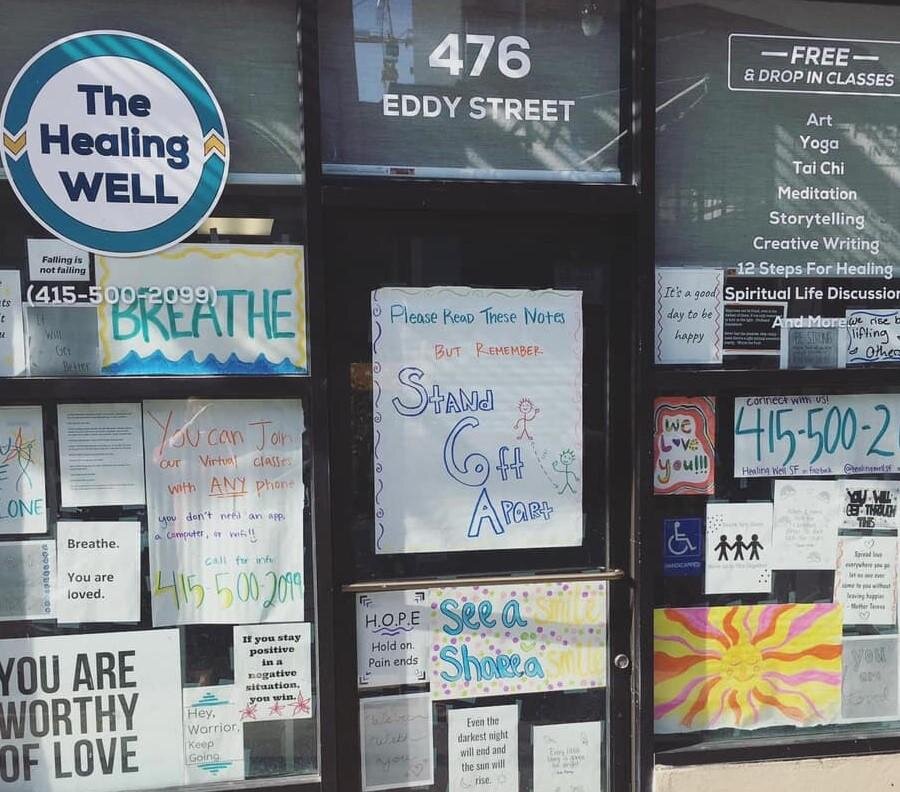
Window display with handmade posters
“The other thing that I love is covering the windows with encouraging messages that are created, again, by our participant leaders who are great artists and high school students. Some leaders bag produce, others come in and draw pictures of the sun, or a rainbow, or write a Maya Angela quote, or Black Lives Matter, or a note saying ‘You are worth it, don’t give up.’ We tap into people’s strength and power here – and share it.”
“Every week we try to rotate these posters so that there are new and encouraging things for people to see—whether they are living on the street or just walking down to the corner market. They have nice things to look at.”
“We know that, more than anything it’s about relationships and about community. How do we create that? Some people can go to classes online, some people can go to programming in the parks, some can go to The Healing Well on Thursday afternoon for tea, some people can talk on the phone, some can receive a note in the mail, some can read a sign in the window, so we say…let’s just do it. And that’s what we’re doing.”
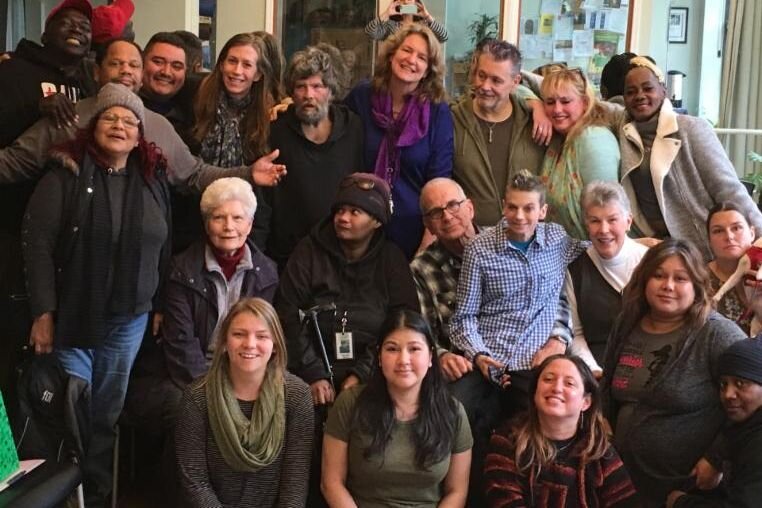
“Volunteers are a huge part of what makes The Healing Well work. “We have volunteers from the Tenderloin, we have volunteers from Marin and Lafayette. There’s a great mix. One thing I love about The Healing Well, which is especially apparent when we were on site, is that whether you are a staff member, a volunteer who owns a second home up in Tahoe, or a person who is living on the street…we all join in the programming together because a lot of the healing happens when we break down the barriers between us and them. Regardless of our background, every one of us has struggle and strength, and it’s in community that we can heal and grow.”
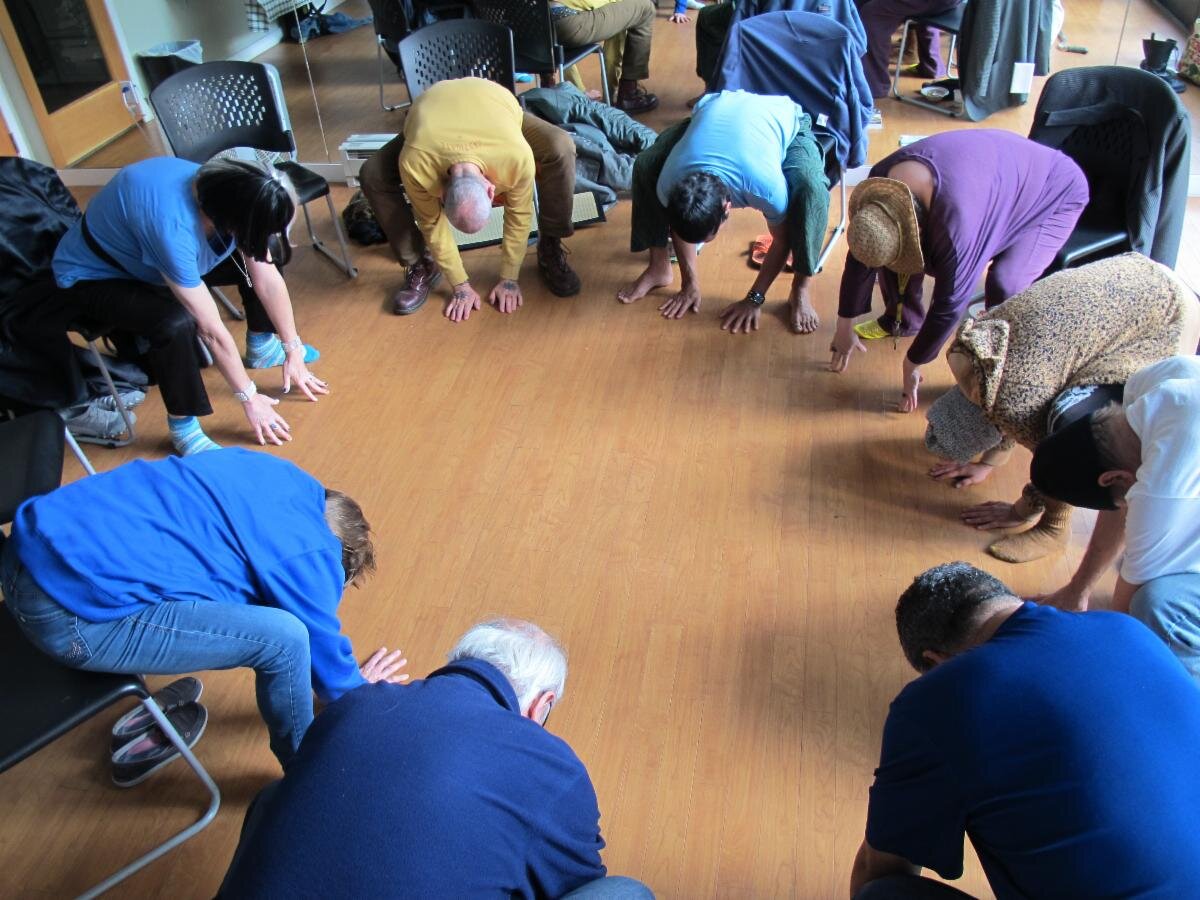
Back in 2014, Kathy was directing a wellness program south of Market when the parent organization had to close all the programs. Having witnessed the power of the programming’s impact on peoples’ lives, Kathy set out to keep serving the community.
“There was an element of real fortune. Unbeknownst to me, one of our volunteers was connected to a foundation that was able to get us some initial funding. Then Faithful Fools (234 Hyde St) said ‘until you find your own space, you can set up shop here.’ So we started with morning programming and then expanded and started doing 12-step groups at the Saint Francis Living Room (350 Golden Gate Ave).”
“We were still looking for our own space to do a full day program and really have a location that felt like a second home for people. Tenderloin Neighborhood Development Corporation (TNDC) was also supportive of us and helped us to secure the space we have now on Eddy Street.”
“What makes things work is when we connect with other people and tap into the generosity and the good values that we all hold. Then you can make something happen.”
“In the Tenderloin, there is that deep sense of love and connection. The drive to know one another, encourage each other, take care of one another, to fight together…I’ve really never experienced anything as pronounced in the way of community as I’ve seen here.”
“But like everyone, I hate the pain on the streets and in some of the buildings that are not well-managed. There are constant reminders and evidence of the injustice and trauma that has been inflicted on these individuals and the neighborhood as a whole. At the same time, I hate when that negative image overshadows the goodness and greatness, power, and potential of the people in the neighborhood.”
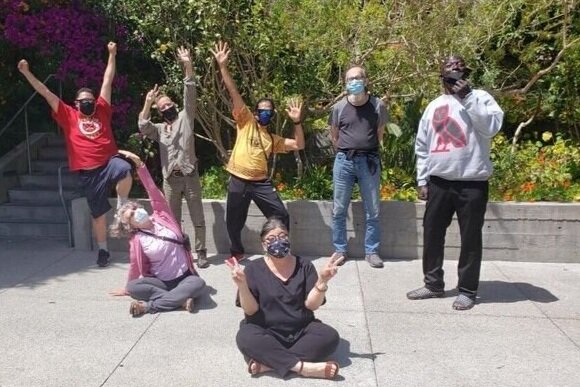
“These aspects can bring me down, and they do at times. I have to balance that by honing in on small, individual acts of courage, fortitude, generosity, and vision that are here day in and day out. It is an important thing to share—especially when the media often sweeps the whole area into the context of this poor and crime-ridden place that needs to be the recipient of salvation—because that’s so far from the truth. There is a real beauty, promise and hope that rests in this neighborhood.”
When not with her husband and three kids (who are all adults out on their own now) or out boogie boarding or body surfing in Pacifica, Kathy finds joy with her second family in the Tenderloin and amid the art and nature that exists here.
“Lately I’ve been challenging myself to look for all the murals and small bits of art that exist in the Tenderloin. I also like going to Boeddeker [Park] and taking in the green. It’s full of beautiful flowers and you can’t believe there’s this little oasis amid this bustling neighborhood. I love just talking and knowing the people on our block and knowing them. I really do.”
All photos courtesy of The Healing Well

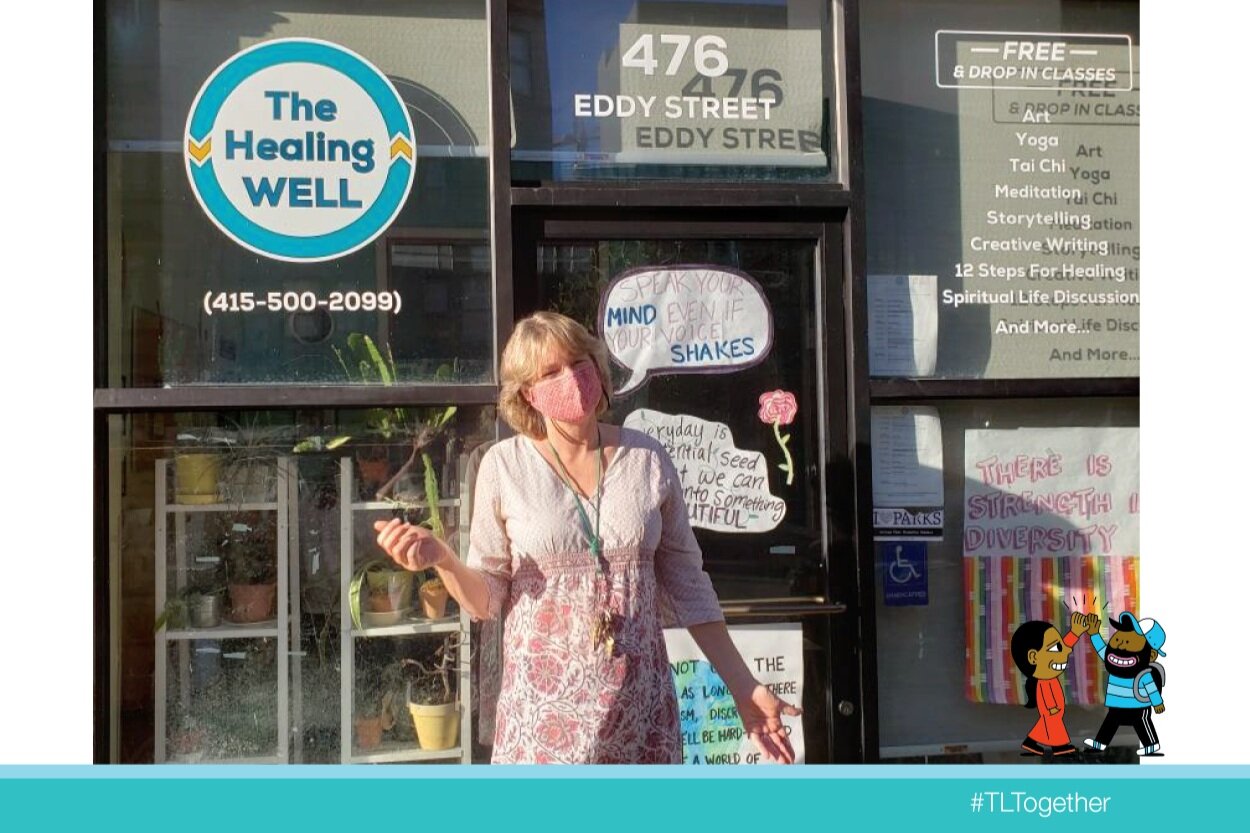
Thanks for wrriting this